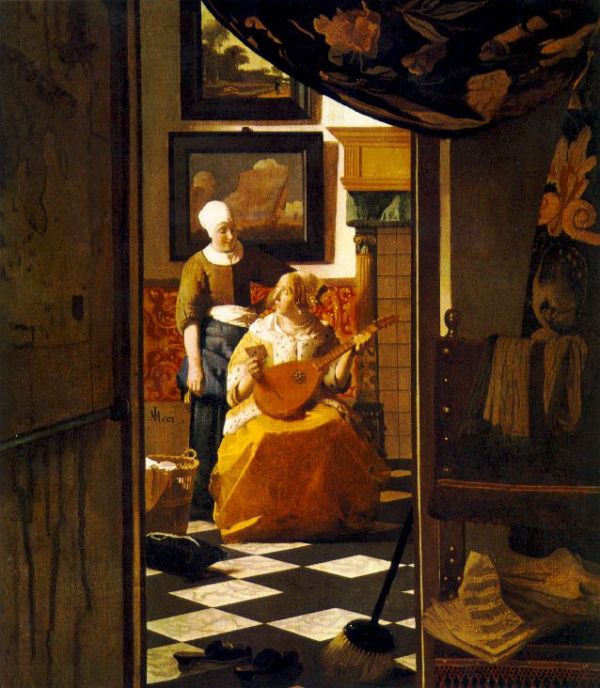
The Love Letter
Amsterdam, Rijksmuseum
44x38 1669-70
We are looking in at an apparently quiet scene where the maid delivers a letter to her mistress, but in fact the painting is a boiling emotional turmoil: the mistress is in love with one who is not her husband, and the maid knows all about it. The two are exchanging glances even before the letter is opened: each knows that it is the sender, not the contents, which is significant. Vermeer exploited this theme elsewhere, in Lady Writing a Letter with her Maid, and Mistress and Maid. The curtain and the containing walls make us feel like spies, watching a private moment.
On the floor next to the mistress is a laundry basket and some embroidery work, and in the doorway is a broom, representing her neglected wifely duties. Instead, the mistress has been playing music, a symbol for thoughts of love. Behind her is a painting of boats moving fast before a wind, with an open sky in view, representing her state of mind; next to her is a fireplace, symbolizing the passion of love, and painted thereon is a lion rampant -- her lover, the letter writer.
The composition is based on contrast between foreground and background, to concentrate our attention on the figures. The foreground is dark, softly painted, and somewhat indistinct, while the background is well-lit and precisely delineated. The map in the foreground is the same as in The Officer and Laughing Girl.
This later Vermeer shows an elegant, perhaps opulent interior, in comparison to the more sparse rooms of the earlier paintings. The mistress is dressed in the ermine-fringed yellow outfit in which so many of Vermeer's women are dressed.